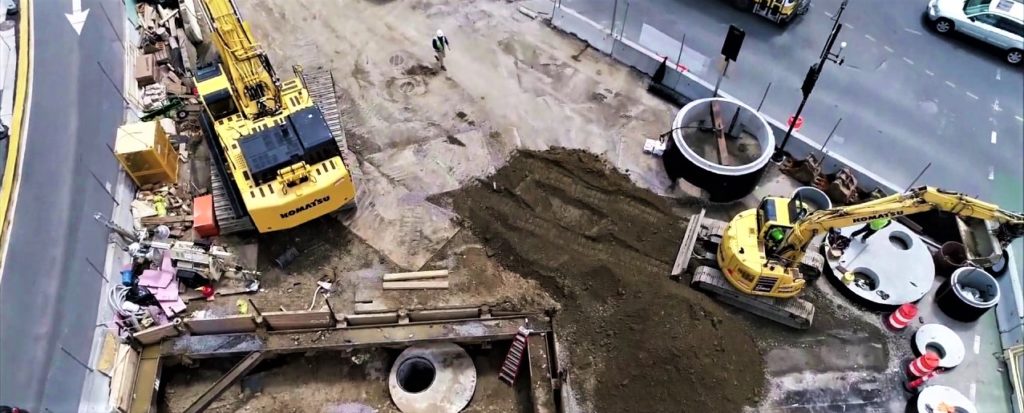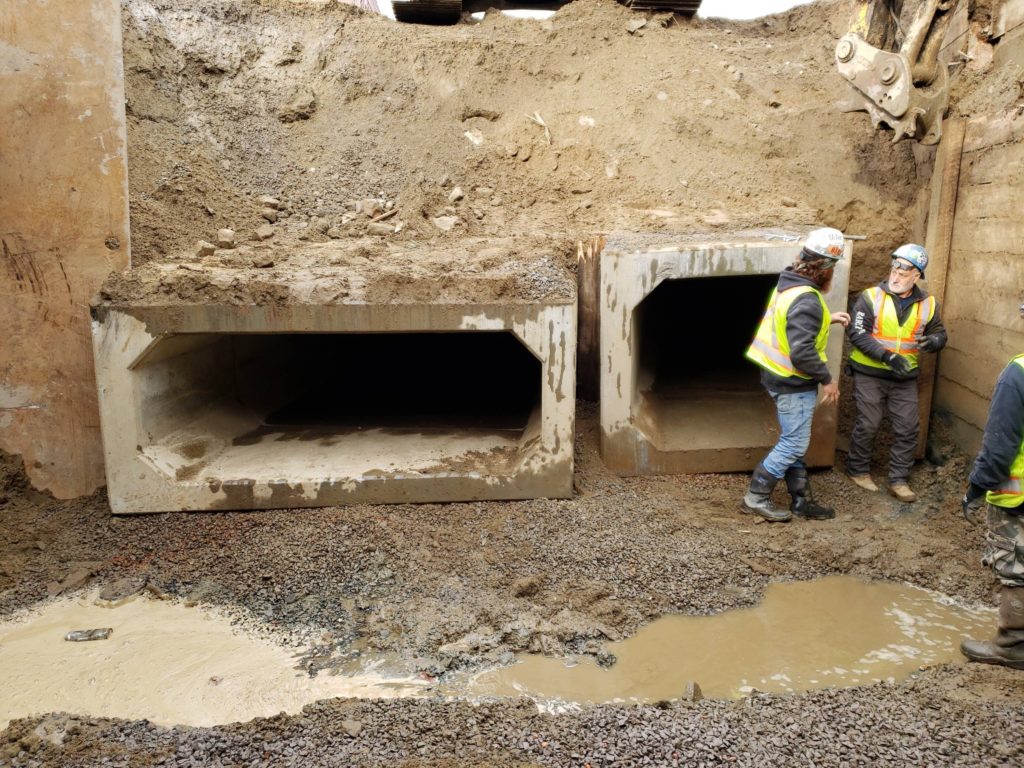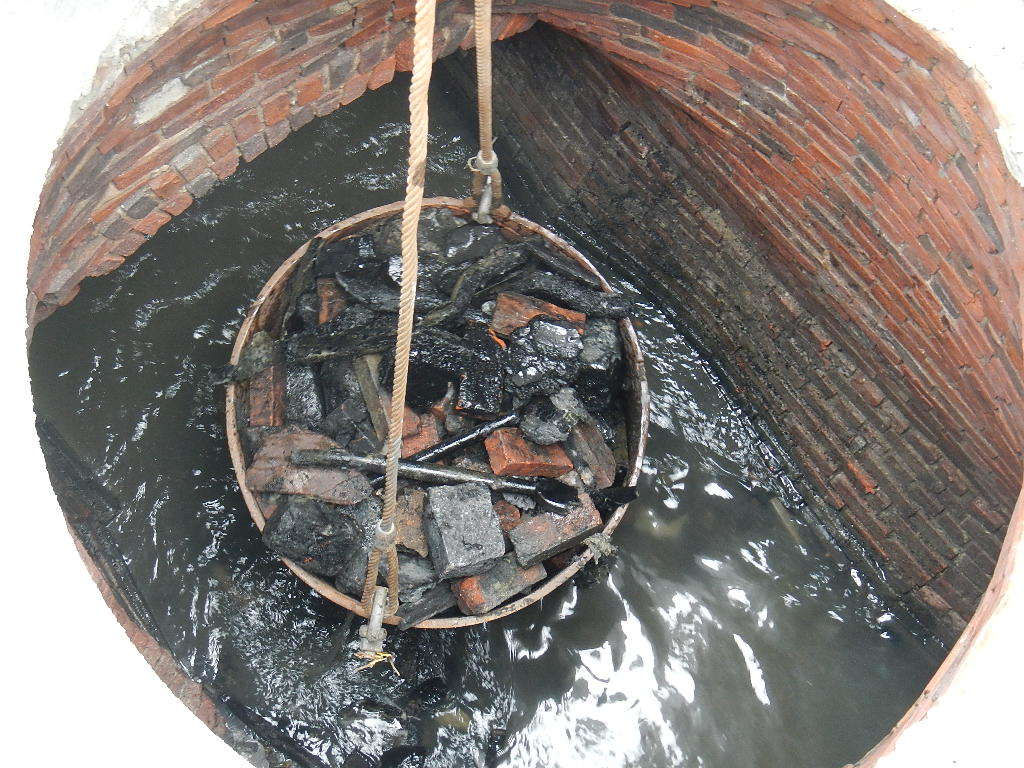SomerVision Number
by 2040
In the SomerVision 2040 process, the Transportation and Infrastructure topic chapter scope was: streets and roads, public transit, sidewalks, stormwater management, bike infrastructure, pedestrian experience, parking, and accessibility. It wasn’t until after the working groups turned in the draft chapters that Staff realized that the best way to call attention to our infrastructure needs was to divide the topic into two chapters
Did you know that Somerville has over about 165 miles of sewer pipe and 125 miles of water pipe? The City improves roughly 2.3 miles of pipe per year.
Somerville’s infrastructure for power, water, transportation, communication, and more is a complex network with many public and private owners, operators, and regulatory authorities. Infrastructure encompasses both visible and invisible assets, including but not limited to roadways, sewers, sidewalks, bridges, tunnels, and utilities like lighting and broadband.
STRENGTHS
Somerville benefits from a pre-war layout when it comes to infrastructure. Generally water and sewer connections run from the front of the building to the street, which makes the connections shorter than our sprawling, suburban counterparts. Somerville has the foundation for high impact investments to improve infrastructure and resiliency due to its dense housing and employment centers.The City has strong relationships with private and public sector entities that have financially supported efforts to improve city infrastructure. In the last decade, Somerville has been the recipient of a $13 million MassWorks Infrastructure Program grant to make extensive water and sewer improvements in Union Square (thus enabling an additional $200 million in redevelopment investments); $350,000 from the Massachusetts Municipal Vulnerability Preparedness Program to plan for and build stormwater management solutions; and almost $1 million in State funds to finance infrastructure and pedestrian improvements to the Kensington Connector. Somerville also utilizes some innovative tools to plan for infrastructure readiness. Since 2015, the City has utilized a data-driven pavement management program based on a number of factors to support objective decisions and develop cost-effective results. Pavement condition data and information regarding other City capital improvements is updated annually to adjust the City’s multi-year plan for repaving roads. In addition, Somerville Climate Forward, the City’s climate change plan, prioritizes stormwater management and infrastructure investment.The City of Somerville has consistently identified infrastructure maintenance as a key priority and remains committed to addressing vulnerabilities and proactively planning for the future.
CHALLENGES & OPPORTUNITIES
Somerville does face specific challenges to maintaining, modernizing, and replacing its aging infrastructure. Much of the City’s infrastructure, specifically its water and sewer infrastructure, was built between the late 1870’s and the early 1900’s. Over 90% of it is over 50 years old. We no longer have any lead water mains but some laterals (the pipe from the main to the building lead pipes may have lead. The City has replaced thousands of feet of older water mains, but struggles to catch up with the mounting needs of aging infrastructure. This backlog means that much of the budget is spent on emergency repairs, which are less cost-effective than proactive upgrades.In addition, much of the underground infrastructure needs are unknown. While the City has managed to assess the condition of some underground water and sewer infrastructure, the vast majority needs to be investigated. This makes it difficult to ascertain the resources and effort needed to not only maintain infrastructure but address its vulnerabilities. There are also privately-owned utilities in Somerville for gas, electrical, and communication services. Many of Somerville’s infrastructure needs, including the separation of sanitary sewage and stormwater runoff, are out of sight, and therefore, out of mind. Addressing the lack of public understanding on these issues that are not visible on a day-to-day basis needs to be communicated to residents. In turn, it could increase public support for dedicating City resources to addressing “hidden” infrastructure concerns.



Union Square has been a major construction zone in recent years, offering an impressive display of engineering and equipment. This project is the first in a series of projects that will enable the City to conditionally separate stormwater for up to 60% of the City. When the underground work is complete, the next phase will involve streetscape improvements that will enhance pedestrian, transit rider, cyclist, and driver experience. The streetscape will also include green stormwater infrastructure in the form of new planted areas and permeable surfaces. Together, these elements of the project will support imperative improvements to our drainage and sewer system, clean our environment, and minimize the flooding in the Union Square area.
GOALS AND TAKEAWAYS
Proactively investing in infrastructure assets not only improves current services but increases the City’s long-term resiliency to events like extreme weather and climate change. Somerville must dedicate financial and other resources to both understanding and addressing infrastructure needs. The following goals and action items demonstrate a proactive path forward that will help Somerville remain responsive and resilient to environmental, financial, and social stressors.
EQUITY GOAL
Implement a transformative approach to addressing infrastructure. Focus on greater investment into building resiliency into our water and sewage systems as opposed to a more reactive approach to repairs.
Utilize innovative and sustainable solutions. Updating our water and sewer systems is integral to climate change mitigation in Somerville. Educate the public on the importance of investing in our hidden water and sewer systems. Spending funds in a proactive manner versus emergency repairs saves considerable costs.Continue to work towards state compliance. By meeting state compliance targets Somerville will have more flexibility, both financially and strategically, for future infrastructure projects. Separate pipes that carry sewage and rainwater runoff. Similar to other old American cities, Somerville has a combined sewer system which collects rainwater runoff from driveways, roofs, and roadways, in the same pipes that it collects and transports sewage to the Massachusetts Water Resources Authority facilities for treatment. During significant rain storms, the combined sewer system may fill up beyond capacity, causing flooding in the streets, and combined sewer overflows into the Mystic River and Alewife Brook. Somerville should continue to implement multi-pronged strategies to separate the sewer system, reduce combined sewer overflows, and increase drainage reliability for much of the city.Collaborate with public entities and private companies. This includes gas, electric, and cellular, to provide reliable and consistent services.
POTENTIAL TASKS
- Continue with the strategic plan to access the condition of Somerville’s water and sewer systems. The sewer and water system is aging in Somerville and currently the approach for addressing needs is more reactive than proactive. Assessing the condition of the system and creating a stronger data set allows the City to take more of an asset management approach to maintenance, modernization, and replacement. This both saves money and allows the City to take into consideration an equitable approach to prioritizing opportunities.
- Advance $400 million sewer infrastructure backlog and $75 million ADA backlog. Assess water and sewer infrastructure needs, and fund proactive improvements to our aging infrastructure.
- Establish a plan for meeting state compliance targets and treatment from runoff
- Investigate innovative or non-traditional funding options for infrastructure improvements. This could include opportunities such as stormwater enterprise funds and renewable energy from sewage systems.
- Invest in green stormwater infrastructure like bioswales in addition to grey infrastructure like an improved pipe system. Introducing sustainable practices decreases the burden on infrastructure and additionally introduces energy and cost savings.
- Pilot energy extraction from sewage. A significant amount of sewage and water from MWRA systems flow through Somerville and there is an opportunity to explore possible energy cost savings by extracting energy from this system.
- Dedicate space on the City’s website and other possible locations to communicate the importance of addressing infrastructure vulnerabilities.
- Increase awareness of programs like MassSave to decrease individual household carbon use and infrastructure demand.


